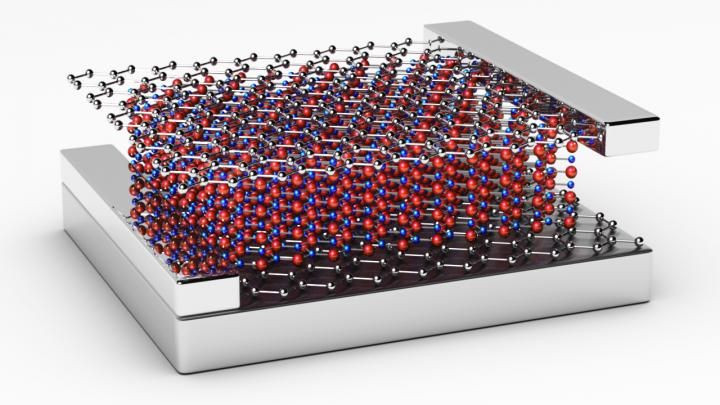Quantum Computing Could Use Graphene To Create Stable Qubits

Graphene, the wonder-material which is the atom-thick two-dimensional form of carbon, is once again showing its potential use in the development of quantum computers. Researchers from École Polytechnique Fédérale de Lausanne (EPFL) in Switzerland demonstrated a graphene-based quantum capacitor, which can produce stable qubits — the quantum counterpart of digital bits used in regular computers.
While a digital bit works on a binary system and can store data as either 0 or 1, quantum bits — or qubits — can exist in two states simultaneously and also exhibit arbitrary superposition, which greatly increases their storage and computing power, by several orders of magnitude. However, creating them requires very controlled conditions, such as extremely low temperatures.
Read: ‘Artificial Atom’ In Graphene Has Potential Quantum Computing Applications
The capacitor designed by the EPFL researchers consists of boron nitride — an insulating material resistant to heat and chemicals — placed between two sheets of graphene. Due to the “sandwich” structure and the unusual properties of graphene, a nonlinear charge is generated, which is necessary to creation of qubits.
A nonlinear charge refers to the fact that the incoming charge introduced to the capacitor is not proportional to the voltage produced.
The design developed by EPFL is relatively easier to fabricate than many other known cryogenic quantum devices, according to a statement by the researchers, but still needs low temperatures to work. It has very low sensitivity to electrical interference, which is a good thing, is not as bulky as some of the other similar devices and also “avoids physical mechanical motion as the structure is not suspended.”
Creating qubits is not all the device is good for. It “could significantly improve the way quantum information is processed but there are also other potential applications too. It could be used to create very nonlinear high-frequency circuits — all the way up to the terahertz regime — or for mixers, amplifiers, and ultra strong coupling between photons,” according to the statement.
The structure of the graphene-based capacitor for generating qubits has been described in detail in an open-access paper published Thursday in the journal npj 2D Materials and Applications, under the title “Nonlinear graphene quantum capacitors for electro-optics.”
Generating stable qubits is one of the biggest challenges to the development of functional and scalable quantum computers. Other than graphene, researchers have been trying various other methods to create qubits, including techniques that use light and lasers, silicon-based nanostructures, and even diamonds.
There is also an ongoing debate about which of the two approaches to quantum computing — superconducting or trapped ions — is better to achieve stable qubits and scalable circuits. While most researchers in the field are taking the superconducting route, a reprogrammable quantum device — the first of its kind — was created a few months ago using trapped ions.
Traditional computer manufacturing companies, not wanting to be left behind when the future arrives, have also jumped onto the quantum bandwagon. In November 2016, Microsoft announced it was ready to move from research to engineering.
© Copyright IBTimes 2024. All rights reserved.





















